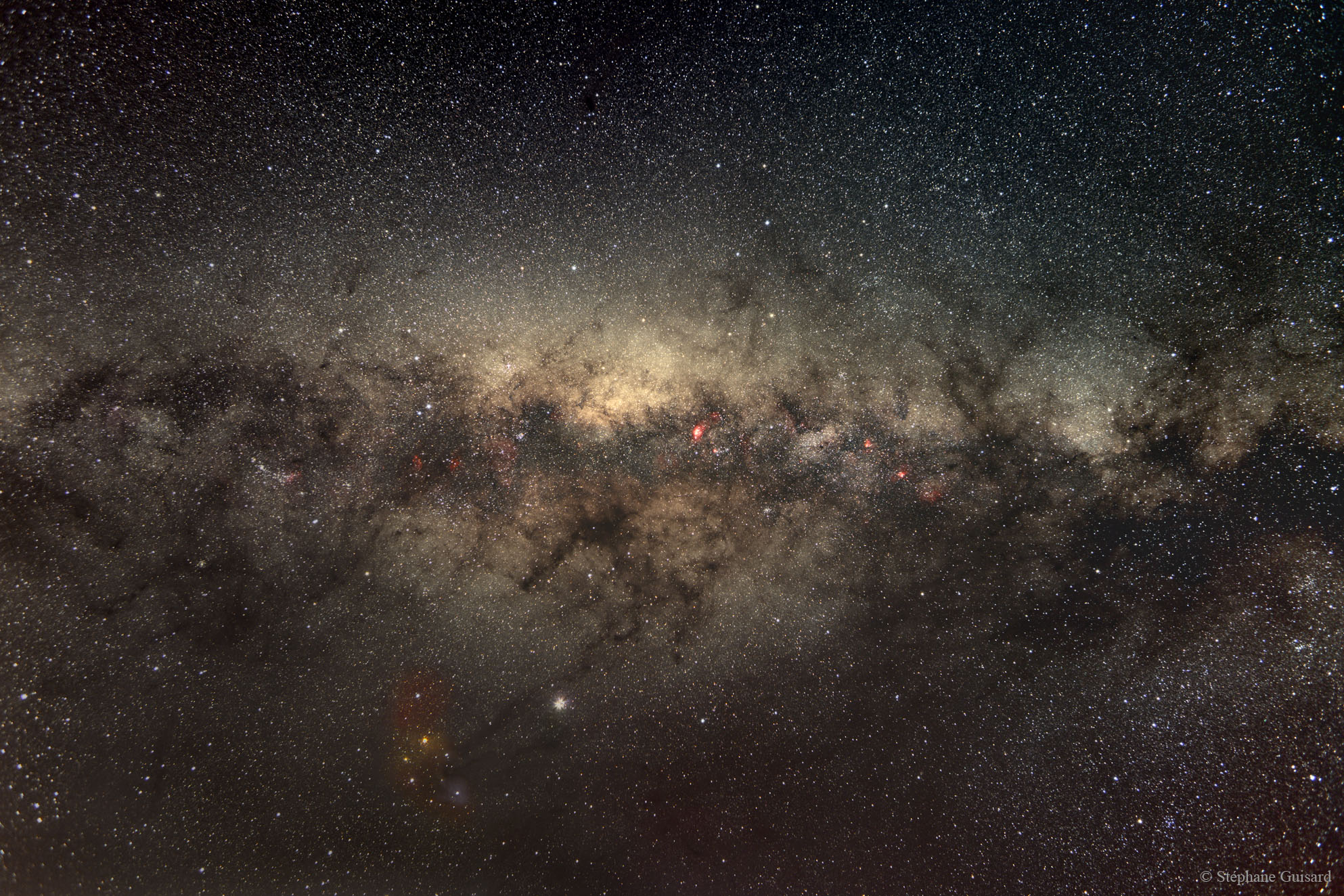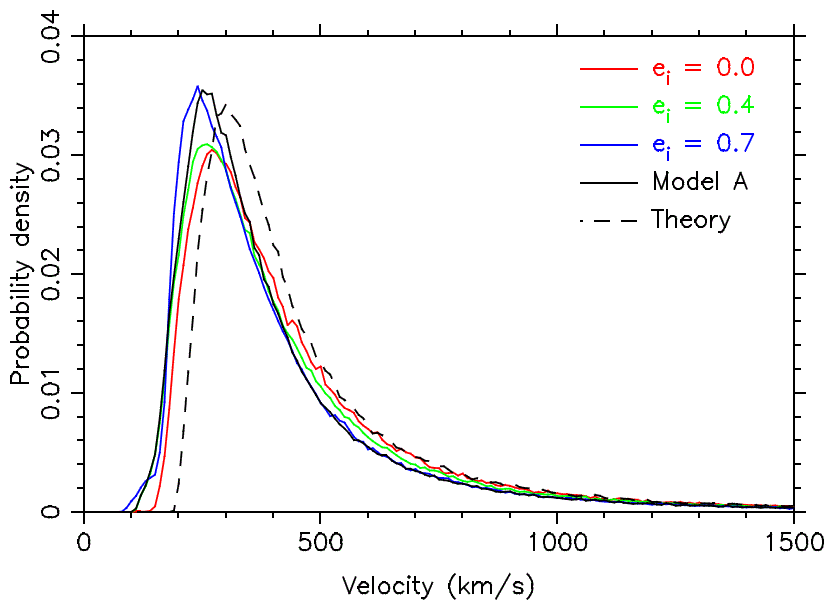Astrophysics Page
Contents
Research overview
Three-body stability
Globular clusters
Galactic centres
Extrasolar planets
Recent presentations
Conferences
Useful codes
Research overview
To date my research has been focused on stability in the three-body problem and its application to problems in stellar and planetary dynamics. I have applied stability analysis to globular clusters in orbit around a galaxy, which has repercussions for the observed velocity dispersion profiles of Milky Way globular clusters. In addition to these projects I have recently become heavily involved with computational modelling of the interaction between stellar and gas dynamics. This project requires significant supercomputing resources, which I will be using at the NAOC and ARI.
Some details of these research projects are given below.
Three-body stability
|
My Ph.D. thesis was on stability of the three-body problem and applications to a wide range of astrophysical systems. Specifically the systems studied were the destruction of globular clusters as they orbit the galaxy; the disruption of stellar binaries by the massive black hole in the centre of the Milky Way; and a new method for discovering low mass extrasolar planets which are not detectable using available methods. Investigations into these problems make extensive use of a new formulism developed by Rosemary A. Mardling that predicts the long-term stability of three-body problem systems. It allows one to predict systems that will be unstable to the escape of one of the bodies; the most likely body that will eventually escape the system depends on the mass ratios between the three bodies. |
 |
Globular clusters
|
Globular clusters are among the oldest objects in the universe. They consist of gravitationally bound groups of 105 to 106 stars and the cluster itself orbits the galaxy. An example of a globular cluster in the galactic halo is shown to the right. Using the stability of the three-body problem in Newtonian dynamics I was able to predict where (if at all) orbits will become unstable to escape. Since, in this context, an unstable three-body system will result in the escape of a star from the cluster. This is expected to result in an observable flattening of the velocity dispersion profile in Milky Way Globular Clusters. |
 |
 |
An example of the stability boundary prediction is shown to the left for NGC 7099. The shaded region shows the expected transition between stable inner orbits and unstable outer regions. The red dotted curve shows an equilibrium cluster model based on Newtonian dynamics, the red vertical dashed line gives the radius where modified Newtonian dynamics may operate. Two papers related to this work have recently been published. The first of these outlines the details for the analytical derivation of the stability boundary and gives a simple to use equation for calculating it for real globular clusters, it is available here. The second paper applies the stability boundary to 15 globular clusters orbiting our own Milky Way galaxy and is available here). A third in the series is awaiting the GPU clusters to hurry up with the results! |
Galactic centres
|
In recent years the existence of massive black holes (MBHs) in the centres of galaxies has moved from being theoretically possible to almost certain. The presence of MBHs in galactic centres is important for determining the rates of high energy events, such as x-ray flares (or gravitational waves) coming from the tidal disruption of stars (or compact remnants). Also of great research interest is their role as the engines of active galactic nuclei and the MBH growth rate during galaxy formation. The observations of stars in the Milky Way galactic centre (right) has increased greatly in the past decade to the point where it is now possible to see an individual gas cloud of a few Earth masses on a collision course with the MBH (here). This makes the study of stellar and gas dynamics in the centre of the Milky Way a fertile topic. |
 |
 |
High energy events thought to originate in galactic centres are observed X-ray/UV flares consistent with the tidal disruption of a star by a supermassive black hole. Such flaring events consist of a rapid increase in luminosity and subsequent decrease over a timespan of months. In recent work with Pau and Cole we showed that the decay rate of these objects can be characteristic of a low-eccentricity disruption when the star was originally part of a binary star system that was disrupted by the MBH (here). The interaction of a binary star system with an MBH is referred to as the Hills mechanism. This results in one star becoming bound to the MBH on a high eccentricity orbit, while the other is ejected from the galactic centre at high velocity. The predicted ejection velocity distribution for hypervelocity stars once they exit the galactic centre after an interaction of a binary and a MBH using results from scattering experiments conducted during my Ph.D. thesis is shown to the left. |
|
During the active galactic nuclei phase the MBH is accreting material from a surrounding gas disk. While the broad details of this process have been known for some time, the transport of matter to the inner region of the disk where luminosity is emitted remains an unsolved question. Miralda-Escudé & Kollmeier (2005) proposed a model whereby quasars are fuelled when stars are captured by the accretion disk as they plunge through the gas. Such plunging stars can then be destroyed and deliver their mass to the accretion disk. Working with Jordi and Juna I built a numerical model of the interaction between stars and the gas accretion disk (here). In particular we examined the effect of asymmetrical stellar cusp potentials on bringing stars into the accretion disk where they can be captured. I have recently finished building a more physically detailed computational model which is discussed here. |
 |
Extrasolar planets
|
The discovery of planets outside of the solar system has sparked a huge observational search for more of these extrasolar planets (the current list can be found here). The majority of extrasolar planets discovered to date have significantly eccentric orbits, some if not all of which may have been produced through planetary migration. During this process, any planets interior to such an orbit would therefore have been susceptible to resonance capture, and hence may exhibit measurable orbital period variations. Work I have done with Rosemary Mardling found that, for specific classes of planetary system, it is possible to detect low-mass planets which have been captured into the strong 2:1 resonance. This work is ongoing and a conference proceedings can be found here. |
 |
Recent presentations (overview only)
• "The role of three-body stability in tidally interacting globular clusters", IAUS 312,
25-29 August 2014, NAOC, Beijing, China, PDF
• "Capturing stars into galactic centre accretion disks", Academia Sinica Institute of Astronomy and Astrophysics
(ASIAA), 25 February 2013, Taipei, Taiwan, PDF
• "The link between the velocity dispersion in globular clusters and three-body stability", "Teeminar" at
Astronomisches Rechen-Institut (ARI), Heidelberg, Germany , 25 June 2012: (similar talk given at AIfA,
Universitaet Bonn, Germany 12 June 2012)
Conferences attended
• IAU Symposium 312 on "Star Clusters and Black Holes in Galaxies across Cosmic Time",
25-29 August 2014, Beijing, China
• 5th Korean-Chinese Meeting, 12 December 2013, NAOC, Beijing, China
• Alajar meeting "Stellar dynamics and growth of massive black holes", 16-27 September 2013, Alájar,
Andalusia, Spain
• MODEST-13 "Modeling Dense Stellar Systems - 13", 19-23 August 2013, Almaty, Kazakhstan
• Astro-GR "Black Hole Growth in the Universe", 3-7 September 2012, Beijing, China
• XXVIII IAU General Assembly, 20-31 August 2012, Beijing, China
• IAU Symposium 271 "Astrophysical Dynamics: From Stars to Galaxies", 21-25 June 2010, Nice, France
• "Pathways Towards Habitable Planets", 14-18 September 2009, Barcelona, Spain
• "Evolution of Planetary and Stellar Systems: dynamical interactions with dnc lin", 21-26 June 2009 ,
Prato, Italy
• "Grand Challenge Problems in Computational Astrophysics" held at Institute for Pure and Applied Mathematics
(IPAM). Workshops I (Astrophysical Fluid Dynamics) and II (N-Body Problems in Astrophysics),
4-22 April 2005, Los Angeles, USA
• Planetary Timescales, 16-19 Feb 2004 , Canberra, Australia
• "Planet Formation: Terrestrial and Extra Solar Workshop" KITP, 5-23 Jan 2004, Santa Barbara, USA
• IAU XXV General Assembly, 13-26 July 2003 Planet Formation: Terrestrial and Extra Solar, Sydney, Australia
• MODEST-3 Meeting, 9-11 July 2003, Melbourne, Australia